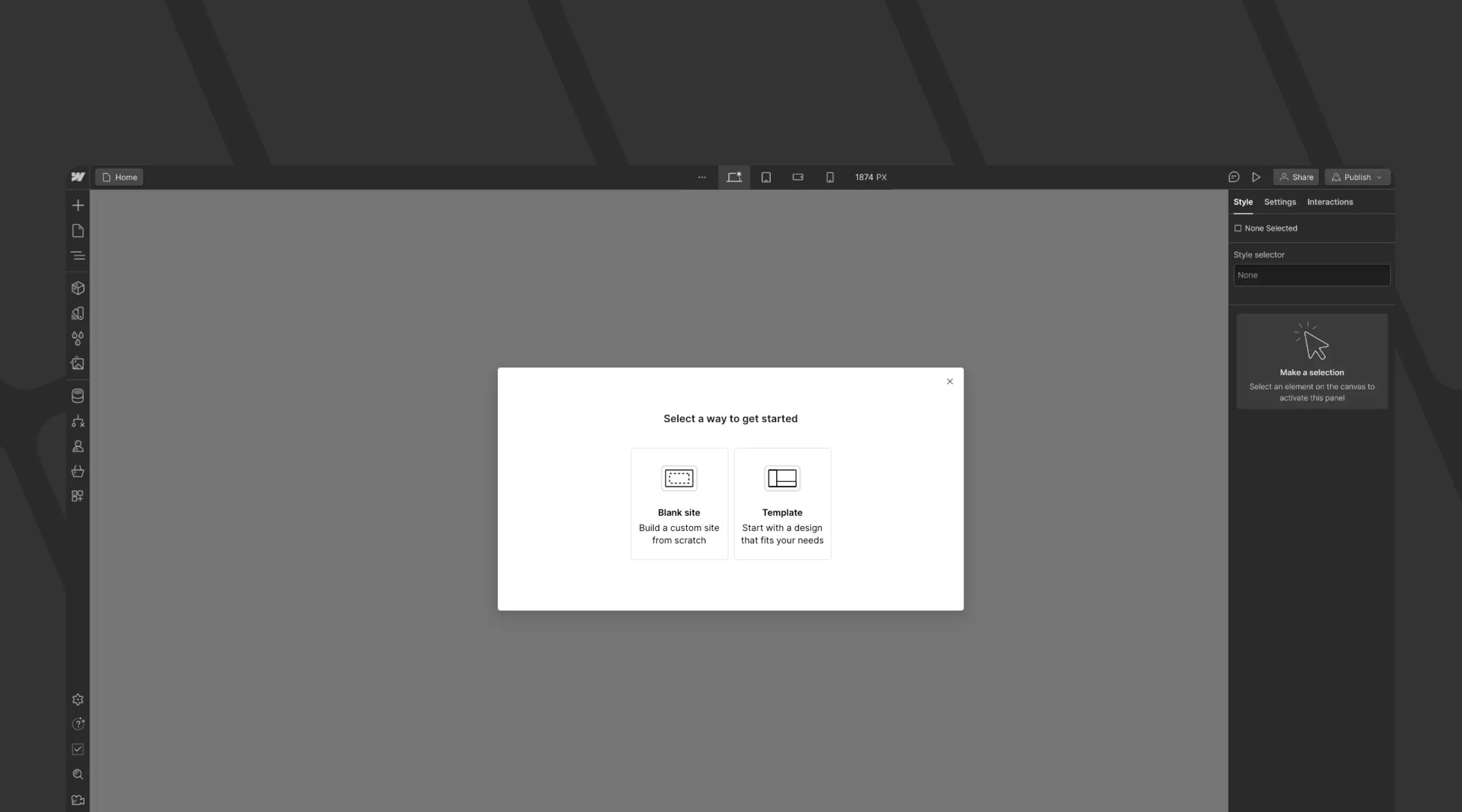How To Optimise Your Website's Speed?
Learn essential website speed optimisation tips to improve performance, enhance user experience, and boost SEO rankings in website design.

Why Website Speed Matters
Users don’t really read websites; they scan, scroll and decide in seconds whether to stay or go.
If your website takes too long to load, they’ll move on to your competitor faster than you can say “refresh.” That’s how you lose conversions before the first impression even forms.
Here’s what happens when your site is slow:
- Bounce rates spike — visitors leave before engaging.
- SEO rankings drop — Google penalises sluggish sites.
- Sales decline — especially for e-commerce, where every second counts.
A well-optimised website, on the other hand:
- Improves user experience
- Enhances visibility on search engines
- Encourages visitors to stay longer
- Increase conversion rates
So if your site feels slow or clunky, it’s time to change that. Let’s explore how to check and fix your website’s speed the smart way.
How to Check Your Website Speed?
Before fixing anything, you need to know where you stand.
Run your site through these free tools:
- Google PageSpeed Insights: Measures both desktop and mobile load times, providing a detailed score and recommendations
- GT Metrix
These tools reveal:
- How long your website takes to load
- Which elements slow it down
- Performance scores for mobile and desktop
Note: Pro Tip: Mobile scores are often lower due to weaker networks. Always optimise for both — desktop users judge by design, but mobile users judge by speed.
Once you have your performance report, it’s time to optimise.
How to Optimise Your Website Speed
1. Minify CSS and Javascript
Many designers skip this early step — but it’s one of the easiest wins.
Minifying removes unnecessary characters, spaces, and comments from your files, shrinking them down for faster loading.
Benefits:
- Reduced file sizes
- Faster browser processing
- Clean code output
In Webflow: Go to Hosting Settings → Advanced Options and enable both Minify CSS and Minify JS. One click can instantly boost your speed score.

2. Use Modern Image Formats
Optimised image formats significantly enhance performance.
Common formats:
- JPEG (Joint Photographic Experts Group) - Great for photos
- PNG (Portable Network Graphics) - For transparency
- GIF (Graphics Interchange Format) - Simple animations
- WebP - Modern and lightweight
Did you know that you can compress the images that you have uploaded to Webflow?

Do take note that if your images are a bit too big to be uploaded into Webflow, you can always go to Tinypng and reduce the file size first.
Tip: Always export imagesinthecorrect size before uploading. Don't rely on CSS to resize huge files.
3. Avoid Excessive Javascript Animations
We get it. You want to make your website pop! Animations are attractive and easy to implement with Webflow. However, they increase loading times and lower your PageSpeed Score.
The key here is balance. Ask yourself:
- Do you need complex animations?
- Will a static but fast website provide a better experience?
Tips:
- Minimise complex interactions
- Remove unnecessary animations
- Use interactions only when it enhances UX
4. Remove Unused CSS Styles
Unused CCS Styles slow down your website. To optimise, follow these best practices
- Reuse styles instead of creating new ones for each div, heading, or paragraph.
- Plan your design systematically and group similar styles together.
- Set global styles (eg. an H1 style that applies to all H1 Headings).
5. Avoid Using Background Videos
Background videos can make a website look visually stunning, but they come at a cost; slow loading speeds.
Alternatives:
- Use compressed MP4 or WebM videos
- Replace with image sliders or hero images
- Use background videos only when necessary
Additional Tips for Webflow Users
Enable lazy loading
Webflow automatically supports lazy loading for images — and you should keep it on.
Lazy loading means that only the images visible in the user’s viewport load first. The rest appear as they scroll, saving bandwidth and improving performance.
This small feature can significantly reduce initial load times.
Optimise Fonts
Fonts might seem harmless, but every custom font adds extra HTTP requests.
- Limit custom fonts to reduce HTTP requests
- Use system fonts or host fonts directly
Use CDN
All Webflow sites comes with a built-in Content Delivery Network (CDN). This ensures:
- Faster asset delivery
- Globally distributed content
Monitor Performance Regularly
Performance fluctuates over time due to content changes or third-party integrations.
Use Google Analytics or PageSpeed Insights monthly to monitor:
- Load time trends
- Device-specific bottlenecks
- High-traffic pages that require attention
Frequently Asked Questions
How can I test my website’s speed for free?
Use PageSpeed Insights or GTmetrix. Both are free and provide detailed insights for desktop and mobile.
Does website speed really affect SEO?
Yes — site speed is a confirmed Google ranking factor. Faster sites get higher rankings and better user engagement metrics.
What’s a good load time for a website?
Aim for under 3 seconds. Anything above 5 seconds increases bounce rates drastically.
How can I improve my Webflow website speed?
Enable minification, compress images, remove unused classes, and limit custom fonts. Webflow’s CDN already helps boost performance globally.
Is Webflow faster than WordPress or Wix?
In most cases, yes. Webflow’s hosting is optimised and plugin-free, reducing dependency on third-party scripts that often slow down WordPress or Wix sites.
Conclusion
Optimising website speed is not a one-off task. It is continous improvement effort.
With tools like Webflow, designers and developers have access to built-in performance features. By following best practices such as minifying codes, compressing images, and managing animations wisely, your website can deliver a seamless and engaging experience for all users.
And most importantly, Google will favour your website in search results.
{{build-better-experience="/directory"}}
Related Articles

Mastering UX Research: How Exploratory Methods Shape Better Design
How exploratory research transforms UX Design in Singapore.

How UX/UI Can Improve Your Website's Conversions
Let's deep dive into how UX can improve your website's conversion, gain new users and most importantly, builds trust in the long run.

5 Key Things to Do Before Building in Webflow
Learn 5 key prep steps for designers before building websites in Webflow, tailored for Singapore.
Launch Your Next Website.
Ready to elevate your online presence with a trusted web design agency in Singapore?


